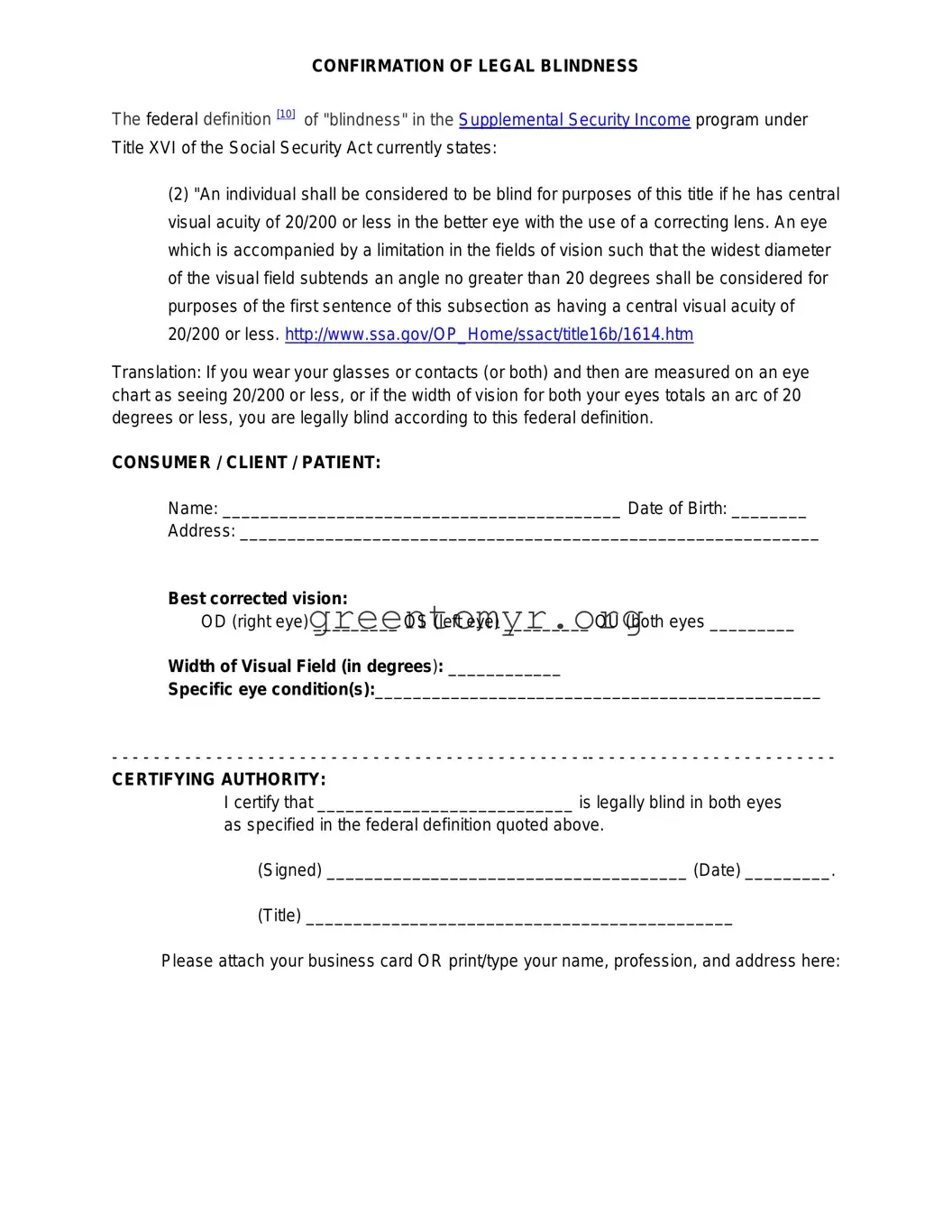CONFIRMATION OF LEGAL BLINDNESS
The federal definition [10] of "blindness" in the Supplemental Security Income program under Title XVI of the Social Security Act currently states:
(2)"An individual shall be considered to be blind for purposes of this title if he has central visual acuity of 20/200 or less in the better eye with the use of a correcting lens. An eye which is accompanied by a limitation in the fields of vision such that the widest diameter of the visual field subtends an angle no greater than 20 degrees shall be considered for purposes of the first sentence of this subsection as having a central visual acuity of 20/200 or less. http://www.ssa.gov/OP_Home/ssact/title16b/1614.htm
Translation: If you wear your glasses or contacts (or both) and then are measured on an eye chart as seeing 20/200 or less, or if the width of vision for both your eyes totals an arc of 20 degrees or less, you are legally blind according to this federal definition.
CONSUMER / CLIENT / PATIENT:
Name: __________________________________________ Date of Birth: ________
Address: _____________________________________________________________
Best corrected vision:
OD (right eye) _________ OS (left eye) _________ OU (both eyes _________
Width of Visual Field (in degrees): ____________
Specific eye condition(s):_______________________________________________
- - - - - - - - - - - - - - - - - - - - - - - - - - - - - - - - - - - - - - - - - - - - - -- - - - - - - - - - - - - - - - - - - - - - - -
CERTIFYING AUTHORITY:
I certify that ___________________________ is legally blind in both eyes
as specified in the federal definition quoted above.
(Signed) ______________________________________ (Date) _________.
(Title) _____________________________________________
Please attach your business card OR print/type your name, profession, and address here:
